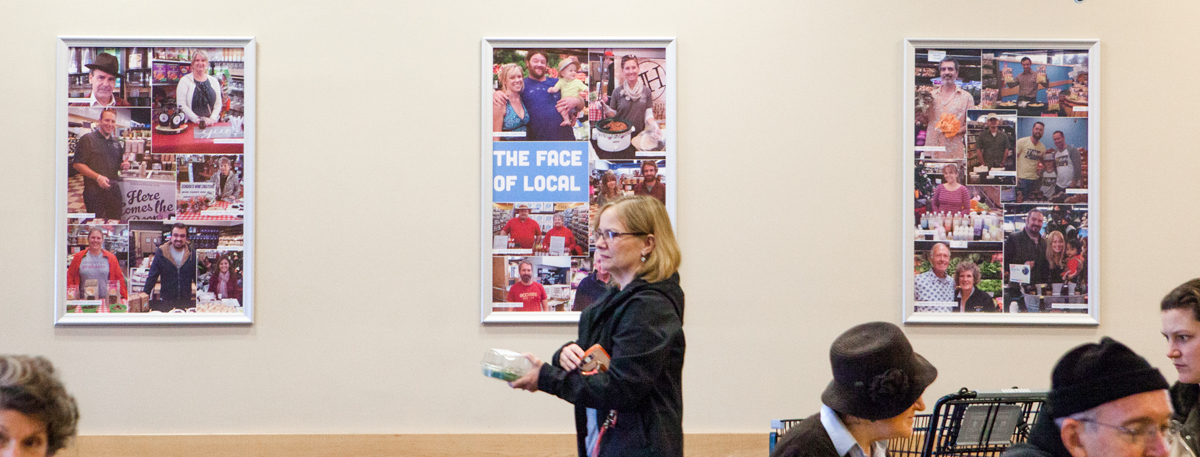Recirculation
Imagining and tracking the recirculation of our food dollars can draw a clear distinction between a food dollar spent at a chain grocer versus one spent at a food co-op.
For starters, whereas chain stores are managed predominantly by people from outside of the community, the entire head-office of a food co-op is most often located directly in the store itself. For every dollar spent at a food co-op, a greater portion ends up in the pockets of our friends and neighbors who work at the store.
Food co-ops are also strong supporters of local foodmakers. This leaves open a greater opportunity for a dollar spent at a food co-op to recirculate within the community we live.
Good Foods Co-op (Lexington, KY)
If you have the time, connect with some local foodmakers in your community and ask them where they spend their money. Use the examples in Chapter 12 for inspiration.
Valerie Sanderson [Source: Kootenay Co-op]
Uphill Bakery (David Beringer) / Valerie’s Fermented Foods (Valerie Sanderson) - Nelson, BC
“For every dollar spent on Valerie’s sauerkrauts and soups, a portion ends up in the pockets of other local farmers like Janet Spicer of Spicer Farm (cabbage), the Moore family at Canyon City Farm (carrots, potatoes, beets), Angela Weir and Gord Spankie of Crooked Horn Farm (parsnips, zucchini), and Owen Broad and Nancy Gabrielse of Kettle River Farm (onions). Another portion of the food dollar ends up at Hall Printing (labels), Cowan’s Office Supplies (paper, glue, tape, printer cartridges), and Phoenix Computers. Then there are Valerie and David’s personal expenditures that find their way into locally owned businesses and professionals … once again, all thanks to people purchasing local sauerkraut and baguettes: Vince DeVito Shoes, Boomtown Sports, Secret Service Cycles, local microbrewers Nelson Brewing and Backroads Brewing, Whitewater Ski Resort, Kurama Sushi, Dr. RP Daniel’s Optometry, Oso Negro Coffee, the Capitol Theatre, Dr. Scott Pentecost (dentist), and Kootenay Insurance Services.” [excerpt: Chapter 12]
When carrying out such an exercise in our own community, we can ask ourselves, “how many of these businesses that are supported by my local foodmaker are also businesses that I too rely upon? Does that business also employ someone I know?” ‘What’ food we purchase, ‘who’ we purchase food from, and ‘where’ we purchase food, truly does shape the communities we live in.
If there’s already a food co-op in your community, find out how the co-op recirculates revenues back into the local economy (wages, community giving, financial/legal services, skilled trades, etc.). If no food co-op yet exists, find the one nearest you and ask them. Once informed, describe to others how a food dollar spent at a food co-op (or more specifically one spent on local food) then recirculates throughout the community.
Where we spend our food dollar matters
For every dollar spent...
… at a conventional store, 23 cents was recirculated locally.
… at the average food co-op, 36 cents was recirculated locally.
… at some food co-ops, as much as 52 cents recirculates locally (more than twice that of a conventional store).
[Source: Civic Economics, “Central Co-op: Feeding the Washington Economy,” Fall 2017]


![Valerie Sanderson [Source: Kootenay Co-op]](https://images.squarespace-cdn.com/content/v1/5bf221562714e5493ab5b5de/1552328992366-6XXB5U4KDA17QDWCLI06/Valerie_Open-House-1-684x1024.jpg)